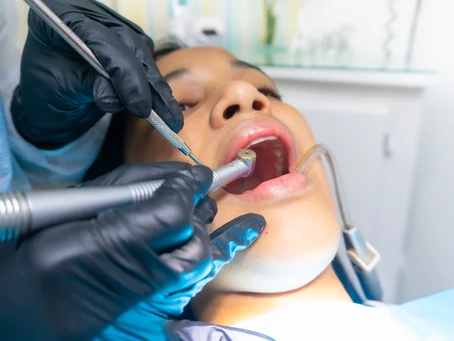If you’ve been told you need to have a tooth extracted, it’s natural to feel a little apprehensive, but you don’t need to worry. The old phrase, it’s like pulling teeth no longer really describes how dentists carry out this routine procedure. We’ll take a look at how tooth extraction is done in a moment, but first, let’s talk about why you might need one. Dentist always try to preserve your natural teeth, but sometimes that isn’t possible.
If tooth decay has gone untreated for a long time, it may have damaged or destroyed most of the structure that holds a tooth together. A tooth like this may not be salvageable. Severe gum disease can cause the tooth to separate from the tissues in the mouth that surround and support it. When this happens, removing the tooth is sometimes the best option. A deep crack or a fracture in a tooth that reaches below the gumline will generally lead to serious infection if the tooth is not removed.
If a tooth is emerging in the wrong position in the jaw, or if the jaw is too small to accommodate all of the teeth that are present, extraction may be needed to prevent damage to adjacent teeth. A simple tooth extraction is an in-office procedure that may be done by your general dentist, or if it’s a little more complicated by a specialist called an oral surgeon. It all depends on how many roots the tooth has and where it’s located.
You might think it’s very hard to remove a tooth because it’s firmly attached to the jaw bone, but that’s not really the case. In fact, the tooth is held in place inside its bony socket by a set of elastic fibers. Your dentist will use special tools to gently manipulate the tooth, causing those fibers to loosen and disconnect. Once the tooth is removed, the extraction site may be filled with processed bone grafting material to minimize the shrinkage of surrounding bone tissue. This allows you the option to replace the tooth with a dental implant, if you so desire.
The extraction site is then sutured to prevent bleeding and aid healing. You won’t feel any of this. because you will be given a local anesthetic and if you would like, a sedative to help you relax. After the procedure, you will be advised to take over-the-counter or prescription pain relievers as needed for any temporary swelling or tenderness. External ice-packs can help ease soreness and prevent swelling. By the next day, you should be able to enjoy most of your usual activities. Tooth extraction isn’t something most of us look forward to. But if it’s your best treatment option, remember that with the help of modern dentistry, it isn’t like pulling teeth.


